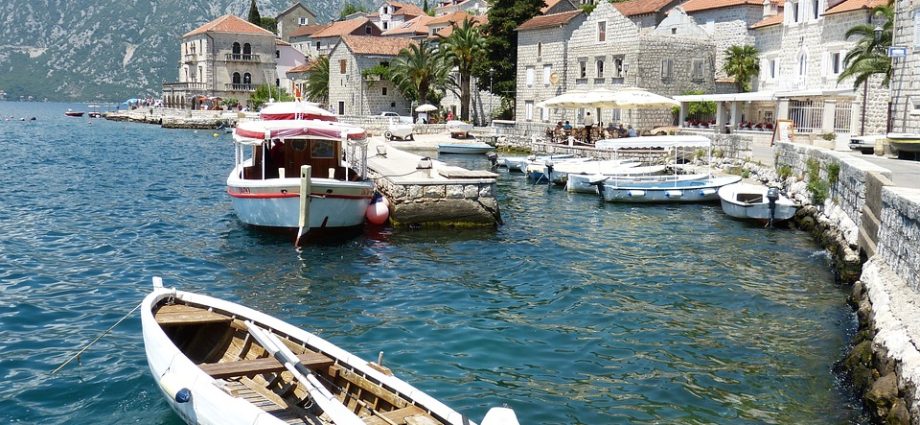Montenegro – the hidden gem of the Balkans – has been steadily gaining popularity among travelers in recent years. With its picturesque coastline, rugged mountains, historic cities, and a rich cultural heritage, it’s no surprise that more and more people are adding Montenegro to their travel bucket list. In this in-depth travel article, we will explore the best things to see and do in Montenegro, its history, culture, and cuisine, and answer some frequently asked questions to help you plan your trip.
1. History and Culture of Montenegro
Montenegro’s history dates back to the early medieval period when the country was part of the Serbian Kingdom. In the 15th century, Montenegro became an independent state, ruled by the House of Petrovic-Njegos, which remained in power until the country’s accession to Yugoslavia in 1918. During World War II, Montenegro was occupied by Italy, and later by Germany, and became part of the Socialist Federal Republic of Yugoslavia after the war.
Today, Montenegro is a parliamentary republic, with a population of around 620,000 people. The country is known for its rich cultural heritage, which includes a mixture of Slavic, Ottoman, and Mediterranean influences. The old town of Kotor, for instance, reflects the Venetian architecture, while the capital city of Podgorica showcases Ottoman-style buildings.
2. Best Places to Visit in Montenegro
Montenegro’s natural beauty is one of the country’s biggest draws. The mountains, the coast, the rivers, and the lakes provide a stunning backdrop for visitors to explore. Here are some of the best places to visit in Montenegro:
Kotor – situated at the end of a picturesque bay, Kotor is a UNESCO World Heritage site that features an impressive fortress, medieval churches, and palaces. The old town of Kotor is a maze of alleyways and squares, with plenty of cafes and restaurants to relax and enjoy the view.
Budva – often described as the “Montenegrin Miami,” Budva boasts some of the best beaches in the country, vibrant nightlife, and an old town that dates back to the 5th century. The old town features narrow alleyways, lined with traditional sandstone houses, and a Venetian fortress that offers breathtaking views of the Adriatic Sea.
Durmitor National Park – home to the country’s highest mountain range, Durmitor National Park is a paradise for adventure seekers. The park offers hiking, cycling, rafting, and skiing opportunities, as well as stunning scenery, glacial lakes, and limestone canyons.
Lake Skadar – the largest lake in the Balkans, Lake Skadar offers a peaceful escape from the hustle and bustle of the coastal towns. The lake is surrounded by mountains, and its crystal-clear waters are home to numerous bird species and fish.
3. Best Things To Do in Montenegro
In addition to visiting the country’s top destinations, there are plenty of things to see and do in Montenegro. Here are some of the best activities to try:
Visit Ostrog Monastery – regarded as one of the most important pilgrimage sites in the Balkans, Ostrog Monastery is perched on a cliff 900 meters above sea level. The monastery, dedicated to St. Basil of Ostrog, attracts thousands of visitors each year who come to marvel at its scenic location and unique architectural style.
Explore the Bay of Kotor – the Bay of Kotor is a natural wonder that offers a wide range of activities, from hiking to kayaking to swimming. You can explore the bay’s numerous picturesque hamlets and fishing villages, taste fresh seafood, and visit historic landmarks such as the Church of Our Lady of the Rocks, an artificial island that houses a museum and a church.
Take a boat tour to the Blue Cave – located on the island of Lustica, the Blue Cave is a natural wonder that features a turquoise-colored water illuminated by sunlight filtering through an underwater archway. You can take a boat tour to the cave and swim in its crystal-clear waters.
Experience Montenegrin cuisine – Montenegrin cuisine is a blend of various influences, including Turkish, Italian, and Balkan. Some of the must-try dishes include cevapi (grilled beef sausages), burek (a savory pastry), and kacamak (a cornmeal dish served with cheese).
4. Frequently Asked Questions About Montenegro
Q: Is Montenegro safe?
A: Montenegro is generally a safe country to travel to. However, travelers should take usual precautions like not leaving their valuables unattended and avoiding dark and isolated areas at night.
Q: What’s the best time to visit Montenegro?
A: The best time to visit Montenegro depends on what you want to do. The summer months (June to September) are ideal for beach activities, while spring and autumn are great for hiking and sightseeing. Winter is also an option for skiing in Durmitor National Park.
Q: Do I need a visa to visit Montenegro?
A: Most visitors to Montenegro don’t need a visa for stays of up to 90 days. However, visitors from some countries, including China, India, and Russia, do need a visa. It’s recommended to check with the Montenegrin embassy or consulate in your country for the latest visa regulations.
Q: What’s the currency in Montenegro?
A: The official currency of Montenegro is the euro (EUR). You can exchange your money at banks, exchange offices, or ATMs, which are widely available in most towns and cities.
Q: Do people in Montenegro speak English?
A: English is generally spoken by younger people in Montenegro, especially in tourist areas. However, it’s always helpful to learn some basic Montenegrin phrases to interact with locals and make your trip more enjoyable.
In conclusion, Montenegro is a hidden gem of the Balkans that has something to offer to everyone. Whether you’re looking for adventure, relaxation, or culture, Montenegro won’t disappoint you. With its beautiful landscapes, rich history, and warm hospitality, it’s no wonder that Montenegro is considered one of the most exciting travel destinations in Europe.
